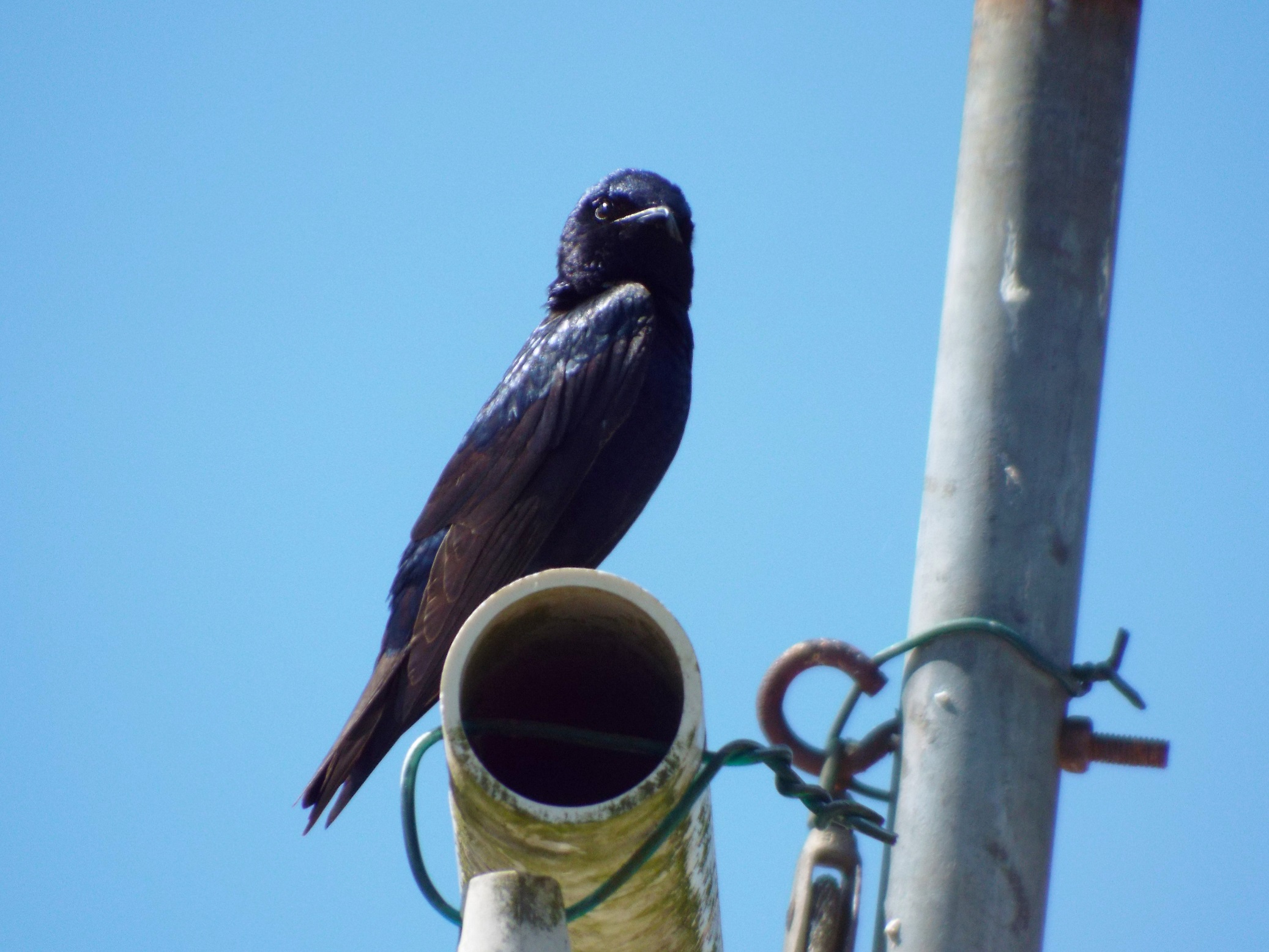
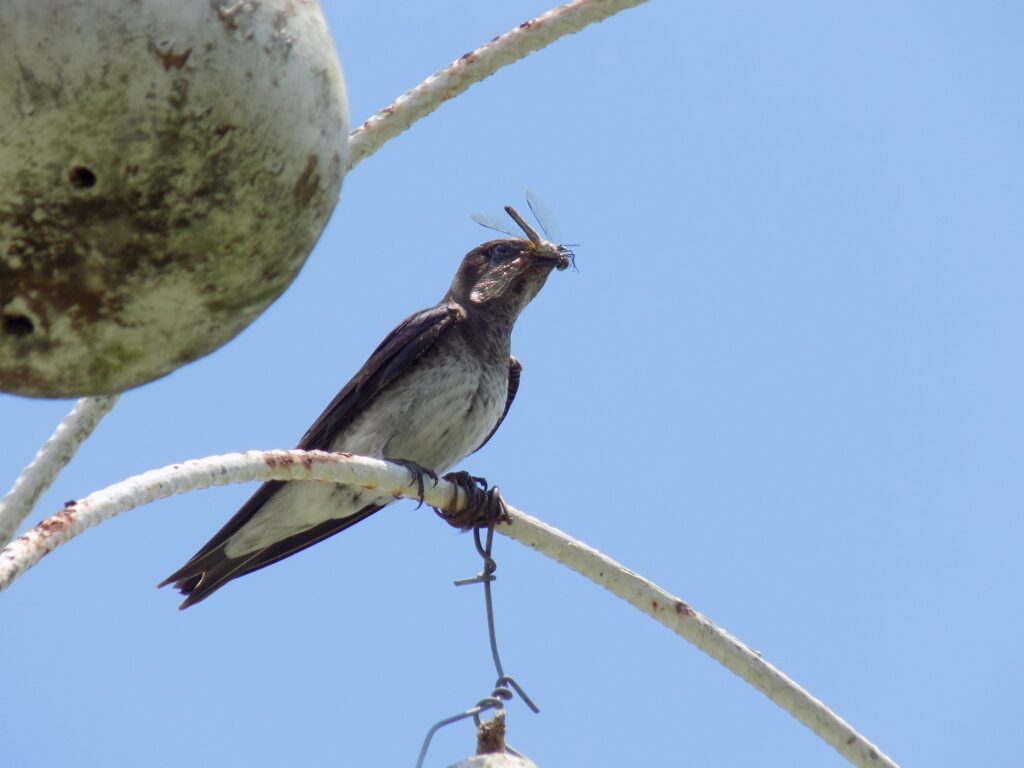
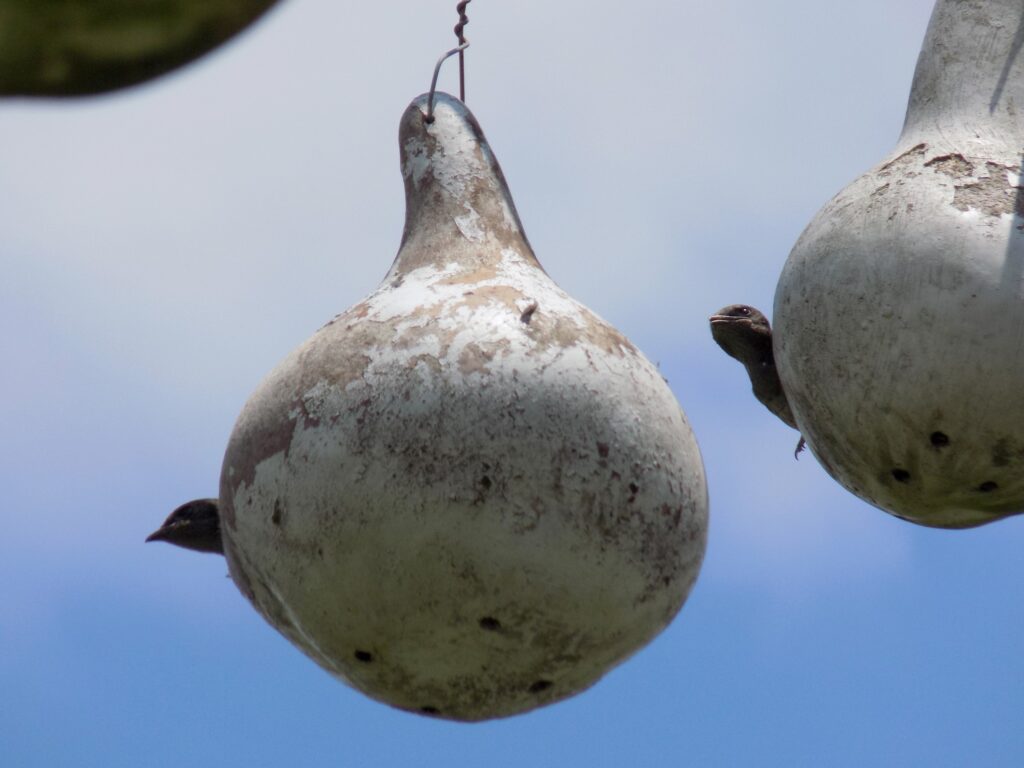
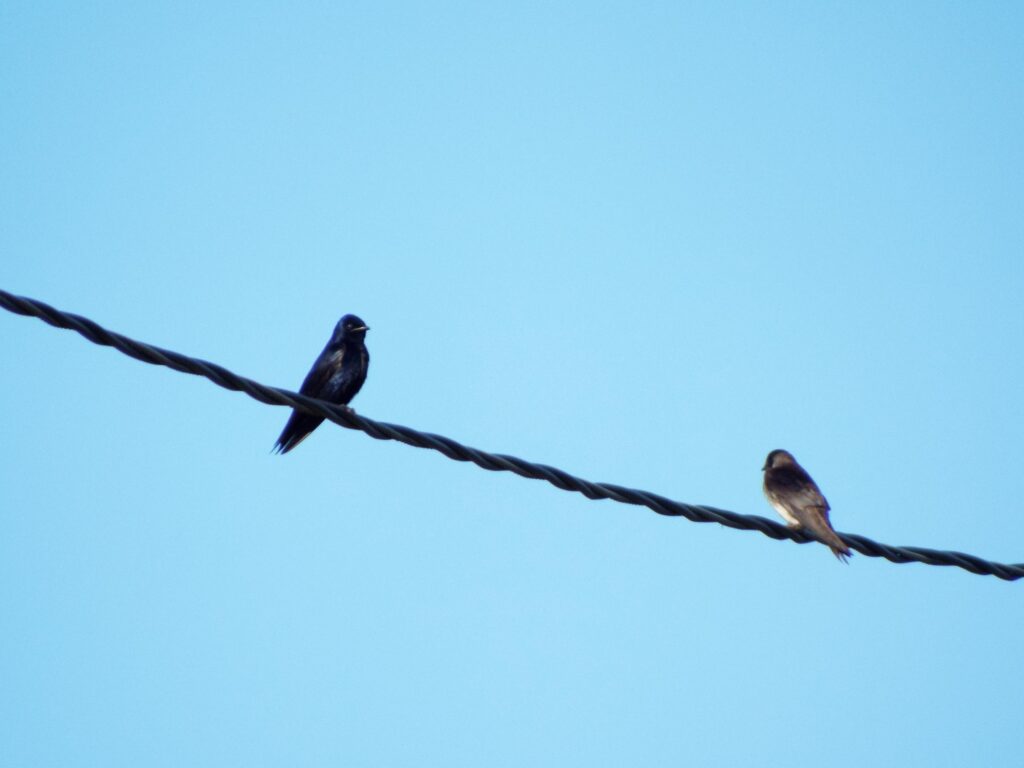
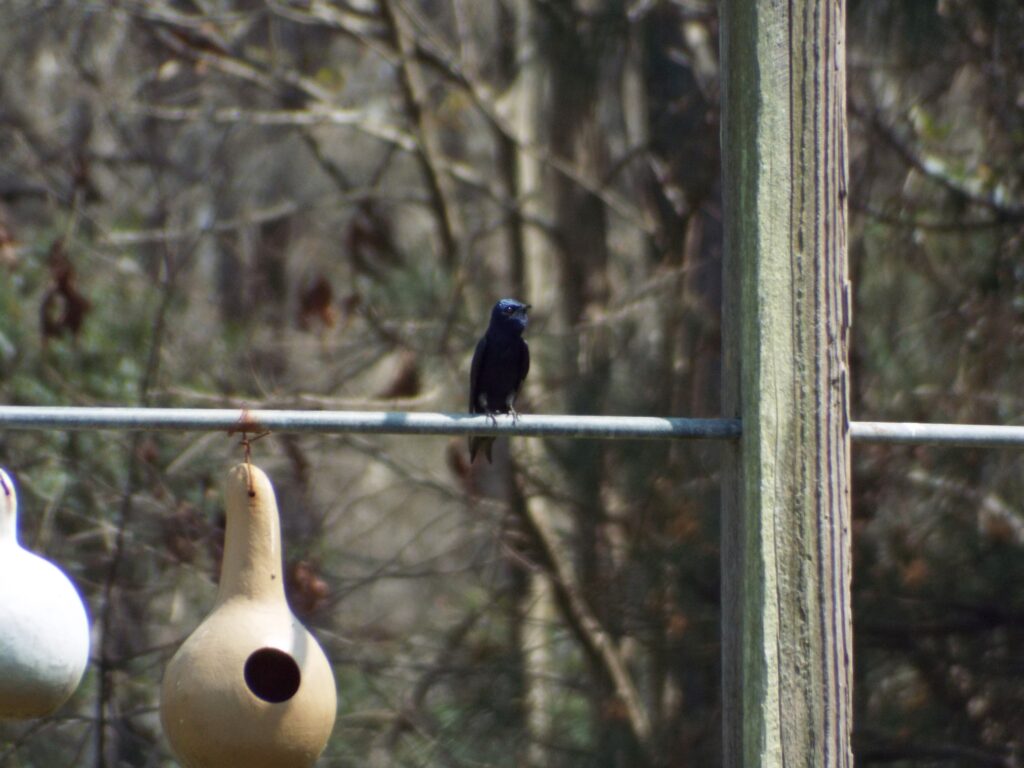
This week for Flora and Fauna Friday we have the high-flying harbinger of spring, the Purple Martin (Progne subis).
The Purple Martin is found throughout the Eastern United States and is our largest species of Swallow. Like all our Swallows, they feature long, pointed wings, a streamlined body, a small beak, and short, delicate legs. However, unlike our other Swallows, they’re of a stockier build and darker complexion. Purple Martins get their name from the plumage of the male who is drenched from beak to rump in metallic indigo feathers and fringed by semi-gloss black flight feathers. Females are not as striking, with their beige bellies beneath dusky gray backs, but still stand out on the wing. Purple Martins are a fair bit larger and usually a shade or many more darker than our other Swallow species, making them easy to identify in the air. Even so, you’re more than likely to hear them before you see them. Their sky-high chaotic song composed of bubbling electronic samples is hard to mistake for anyone else. Purple Martins are insectivores. They eat insects of all shapes and sizes and catch all their food on the wing. Martins snag their to-go orders by skillfully employing their impressive speed and agility. Swallows are some of the fastest and most maneuverable bird species there are and their large, broad mouths help funnel in prey. They even drink while flying by skimming the surface of the water.
Other than the purplish plumage, the big thing that sets Purple Martins apart is their proclivity for colony nesting. A few Purple Martins begin arriving in the Lowcountry from their wintering grounds in South America in about mid-February. These early birds, nicknamed scouts, are older adults returning to their prior haunts. Over the coming weeks, the remaining birds trickle in in increasing numbers and begin to establish that year’s breeding colonies. These colonies can be anywhere from a handful of birds in a single house to several hundred across a property. It really just depends on housing if the habitat is good. Martins can be defensive and are known for dive bombing people or predators who get too close for comfort. Purple Martins now nest almost entirely in artificial nestboxes in the Eastern United States. Originally, Martins were cavity nesters that used old Woodpecker nests. Yet, they’ve now urbanized to preferentially inhabit avian apartment complexes of hollow bottle gourds and claustrophobic condominiums. Interestingly, this shift occurred only in the last few hundred years and has become a permanent fixture of their ecology. Native Americans erected Martin-houses using bottle gourds prior to the arrival of European colonists. Their reasons for doing so aren’t understood but the Martins took kindly to the gesture nonetheless. Later, colonists emulated the Native American practice and apparently appreciated the beautiful bubbly birds as well. Before long, much of the Martin’s natural nesting habitat had been destroyed by logging and the birds became dependent on artificial nests. Nowadays, not only do they nest entirely in nestboxes but, when given the option, Martins actually prefer nesting near human activity rather away from it. If you’re interested in making friends with Martins, consider erecting a Martin house for next year. They love open fields, ponds, and singing to their ground-dwelling neighbors.